Nytt på fhi.no
Viser 9 treff
- Molekylærepidemiologi og antibiotikaresistens hos invasive Haemophilus influenzae i Norge 2017-2023
Molekylærepidemiologi og antibiotikaresistens hos invasive Haemophilus influenzae i Norge 2017-2023
Sist endret
Studien vil gi ny kunnskap om epidemiologi og antibiotikaresistens hos invasive H.influenzae i Norge.Prosjekt - Karakterisering av Streptococcus pneumoniae serotype 24F
Karakterisering av Streptococcus pneumoniae serotype 24F
Sist endret
Vi ønsker å studere forekomst over tid, samt alvorlighetsgrad og mikrobiologiske karakteristika av invasive infeksjoner med serotype 24F i Norge.Prosjekt - Karakterisering av meningokokkstammer og antistoffrespons fra pasienter med serogruppe A meningokokksykdom
Karakterisering av meningokokkstammer og antistoffrespons fra pasienter med serogruppe A meningokokksykdom
Sist endret
Prosjektet skal studere glykan variasjon på overflatestrukturer i meningokokker og immun respons ved meningokokksykdom.Prosjekt - Protein glycosylation and glycan diversity in Neisseria gonorrhoeae and Neisseria meningitidis (PROGLYC)
Protein glycosylation and glycan diversity in Neisseria gonorrhoeae and Neisseria meningitidis (PROGLYC)
Sist endret
Bacterial meningitis is a serious global health problem and one of the major causative organisms is Neisseria meningitidis, which is also a common commensal in the upper respiratory tract of healthy humans and the only agent able to cause epidemics of meningitis. In bacteria, numerous loci involved in biosynthesis of surface exposed antigenic structures, such as outer lipopolysaccharides, lipoproteins, pili, flagella and other secreted proteins that are involved in the interaction between bacteria and host, are frequently subjected to homologous recombination and phase variation. These mechanisms are well described in Neisseria, and phase variation provides the ability to change these structures reversibly in response to the environment.Prosjekt - Alvorlige infeksjoner med Vankomycin resistente enterokokker i Norge
Alvorlige infeksjoner med Vankomycin resistente enterokokker i Norge
Sist endret
Studien søker å beskrive risiko for alvorlige infeksjoner (invasive) med vankomycinresistente hos bærere ved hjelp av register data fra MSIS og de medisinsk mikrobiologiske laboratorier.Prosjekt - TBFVNET: SURVEILLANCE AND RESEARCH ON TICK-BORNE FLAVIVIRUSES (TBFV)
TBFVNET: SURVEILLANCE AND RESEARCH ON TICK-BORNE FLAVIVIRUSES (TBFV)
Sist endret
Prosjekt - Consolidation of the HERA-WGS-infrastructure and capacity building at NIPH to enhance microbial surveillance and preparedness
Consolidation of the HERA-WGS-infrastructure and capacity building at NIPH to enhance microbial surveillance and preparedness
Sist endret
The general objective of this project is to further strengthen and expand our microbial WGS analysis. We will do this by automation of our laboratory workflow, including digitalisation of instrument data, expanding the current WGS activity to other pathogens, and develop downstream visualisation and reporting platforms. This will allow us to more rapidly and efficiently respond to the Covid-19 pandemic, as well as enhance our preparedness for future pathogens and other cross-border threats.Prosjekt - Kryssbeskyttende antistoffer mot gonoré etter vaksinasjon med meningokokkvaksiner
Kryssbeskyttende antistoffer mot gonoré etter vaksinasjon med meningokokkvaksiner
Sist endret
Prosjektet ønsker å undersøke hvilke antigener som bidrar til kryssbeskyttelse og dermed oppnå kunnskap som kan være viktig i å utvikle en fremtidig gonorévaksine.Prosjekt - Holdbarhetsstudie: langtidslagring av serum
Holdbarhetsstudie: langtidslagring av serum
Sist endret
Hensikten med dette kvalitetssikringsprosjektet er å se om det er noen forskjell i holdbarheten til enkelte komponenter i serum ved langtidslagring ved -80 grader i tre ulike lagringsalternativer.Prosjekt

